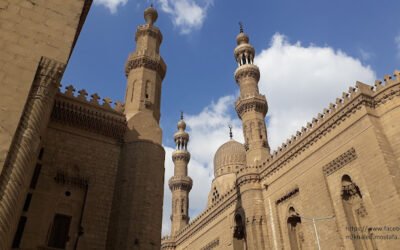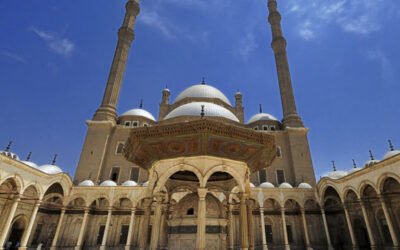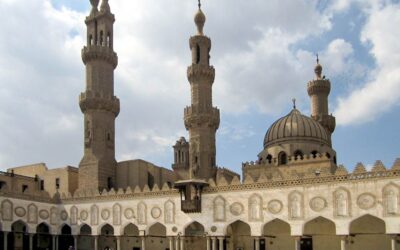Ibn Tulun Mosque
Ibn Tulun Mosque
- The Musjid of Ibn Tulun is in Cairo, Egypt. It’s one of the oldest Musjids in Egypt and Africa, still in its original form, and it’s the biggest Musjid in Cairo in terms of land area. It’s built around an open courtyard, which lets in natural light. The Musjid has decorations made from carved stucco and wood, showing ancient Egyptian architecture. Lots of tourists visit this Musjid.
- The Musjid was made by Ahmad ibn Tulun, who ruled Egypt from 868 to 884. He was from the Tulunid dynasty and had a lot of independence. The Musjid was designed by Saiid Ibn Kateb Al-Farghany, who was an Orthodox Christian. He also designed the Nilometer. The Musjid’s construction started in 876 AD, and it was finished in 878/879 AD.
- The Musjid sits on a small hill called Gebel Yashkur, which means “The Hill of Thanksgiving.” Some legends say that Noah’s Ark rested here after the Flood, not on Mount Ararat. The Musjid has been used for different things. In the 12th century, it was a shelter for pilgrims from North Africa going to Hijaz.
- The big Musjid was supposed to be the center of Ibn Tulun’s capital, al-Qata’i, where the Tulunid dynasty was based. There used to be a door from the Musjid to Ibn Tulun’s palace. Al-Qata’i was destroyed in the early 10th century, but the Musjid survived.
- The Musjid was built in the Samarran style, like other Abbasid constructions. It’s made around a courtyard, with covered halls on each side. The biggest hall faces the qibla, the direction of Makkah. The original Musjid had a fountain in the courtyard, a dome supported by marble columns, and marble floors. In the 13th century, Sultan Lajin added a distinctive sabil with a dome in the courtyard instead of the fountain.
- During medieval times, some houses were built against the Musjid’s walls. Most were knocked down in 1928, but two old ones were kept. These houses, known as the “house of the Cretan woman” and Beit Amna bint Salim, are now part of the Gayer-Anderson Museum. It’s named after a British Army officer who lived there.
- The Musjid has been fixed up several times. The first known fix was in 1077 by the Fatimid vizier Badr al-Jamali. Sultan Lajin did more fixes in 1296. The most recent one was in 2004 by the Egyptian Supreme Council of Antiquities.




